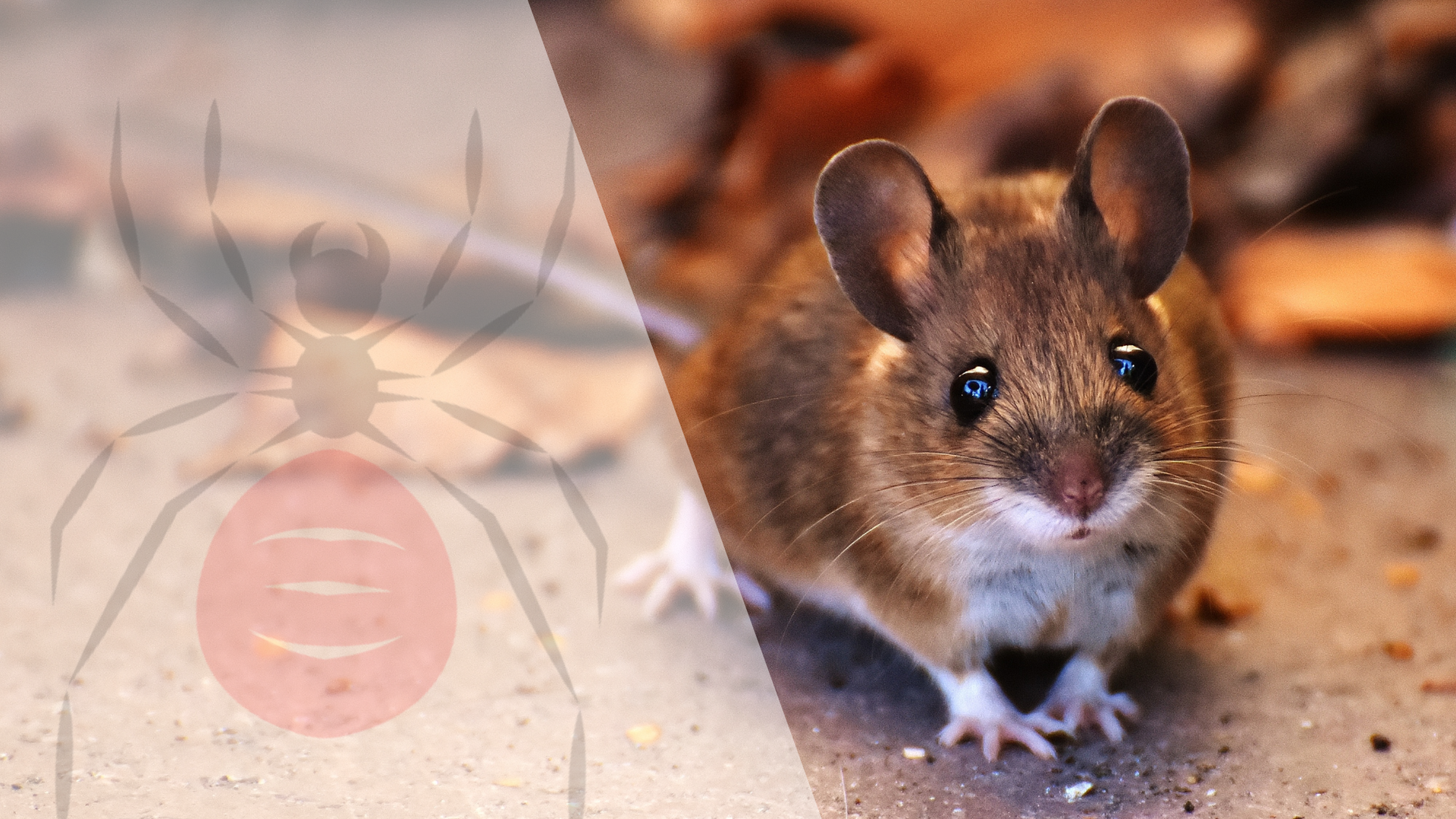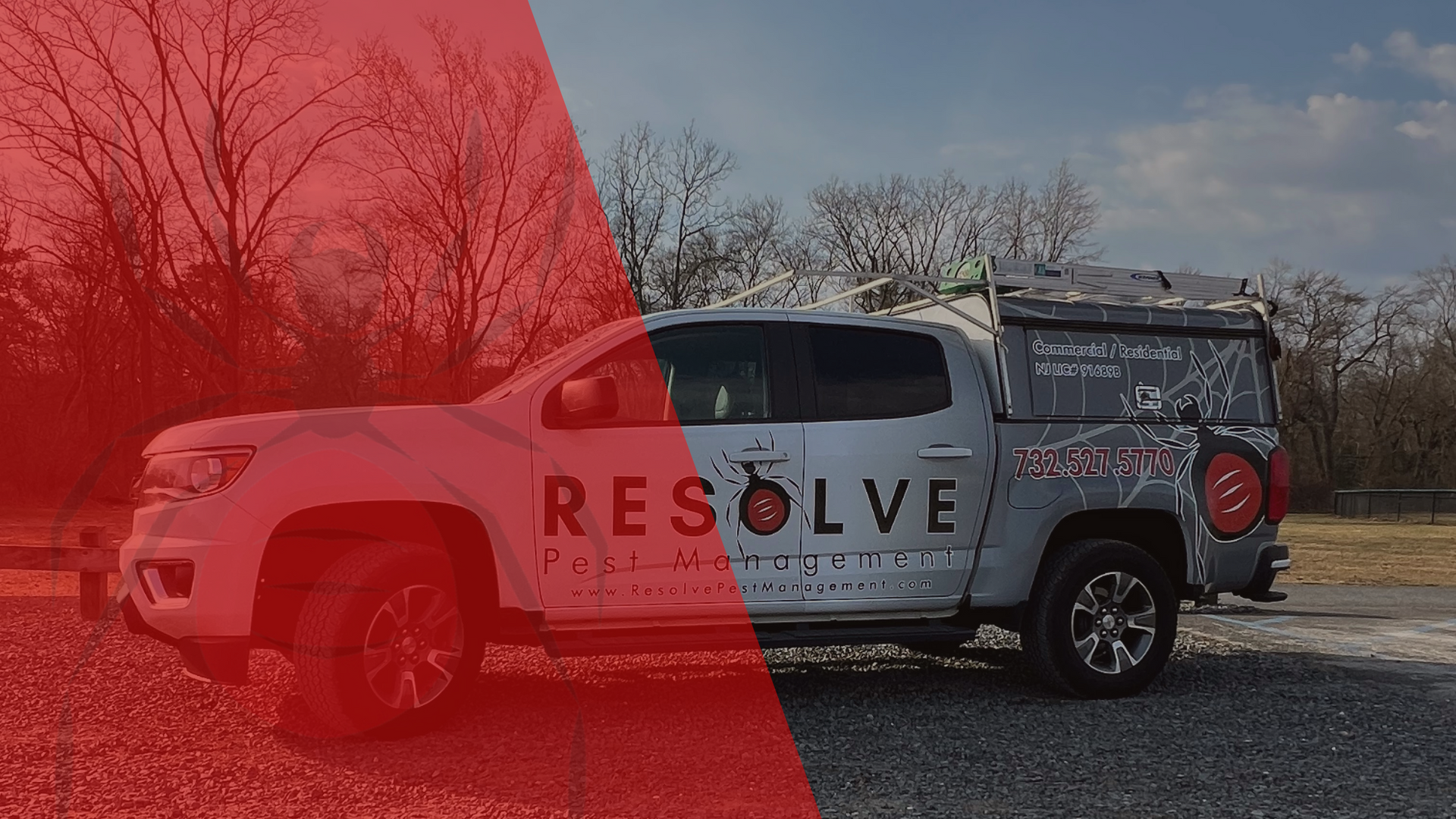Why Pest Control Is Crucial for a Healthy Home
Written by
Key Takeaways
- Pests like cockroaches and rodents can exacerbate allergies and asthma
- Effective pest management safeguards against diseases and food contamination
- Regular home cleaning and maintenance reduce the risk of pest infestations
- Non-toxic and biological pest control methods are safer for families and the environment
- Professional pest control assists in thoroughly eliminating severe infestations
Understanding the Health Risks of Pest Infestations

Understanding the health risks of pest infestations is critical for maintaining a healthy home. We'll learn how pests can transmit diseases to humans, highlighting why eliminating these unwanted visitors is more than a matter of comfort. I'll discuss the allergens and respiratory problems pests can trigger, the dangers they pose through contamination of food and surfaces, and how they can even damage the very structure of our homes. Recognizing early signs of pest presence is essential. Join me as we delve into these areas to underscore the importance of proactive pest control.
Recognize How Pests Transmit Diseases to Humans
It's vital to recognize that pests can be more than just a nuisance; they are vectors for disease. Rodents, for example, can carry hantavirus, while mosquitoes are notorious for spreading Zika and West Nile virus. When pests enter our homes, they can transmit these pathogens to us through bites, droppings, or even through the food they contaminate, underscoring the necessity of effective pest management for health and safety.
In my experience, one of the most overlooked aspects of pests' influence on human health is their potential to trigger and exacerbate allergies and asthma. Cockroach droppings, for instance, are a known allergen, and the dust from their decomposed bodies can pollute indoor air quality. By ensuring these pests are controlled, we actively take strides to protect our families from hidden health risks that can have a lasting impact on our well-being.
Learn About Allergens and Respiratory Issues Caused by Pests
When we talk about pests, it's not just about the unease they cause; their presence can lead to serious allergens and respiratory issues. Dust mites, for example, thrive in the hidden corners of homes, contributing to asthma and allergy symptoms. My work in pest control has shown that regular interventions can markedly reduce these risks, by cutting down the accumulation of allergens stemming from pests like dust mites and their waste products.
Direct exposure to pests and their detritus can exacerbate existing respiratory conditions and even induce new ones: roaches and rodents leave behind droppings that become particulate matter as they disintegrate, inflaming allergies and asthma. For those among us already suffering from respiratory conditions, or with family members who do, it's paramount to maintain a pest-free environment not only to protect our health but also to improve our quality of life:
- Regular cleaning to prevent pest-related allergens from accumulating.
- Sealing entry points to deter pests from entering.
- Using air purifiers to reduce airborne allergens from pests.
Understand the Contamination of Food and Surfaces
One of the most disconcerting ways pests affect our homes is through the contamination of food and surfaces. In my line of work, I've seen how quickly rodents and insects can create unsanitary conditions by transmitting pathogens such as Salmonella and E. coli onto kitchen counters or into pantry items. This reinforces why implementing and upholding rigorous pest control measures is crucial in safeguarding both the cleanliness of our living spaces and the health of our families.
Compounding the problem, pests like flies can spread contaminants by landing on exposed foods, while roaches can traverse through drains and garbage, picking up harmful microbes along the way. I've witnessed households suffer from foodborne illnesses, which could have been prevented with proper pest management strategies, highlighting the undeniable link between a pest-free home and the well-being of its occupants.
Assess the Structural Damage Pests Can Cause
The integrity of our homes often goes unnoticed until compromised by pests that gradually inflict structural damage. Termites, in particular, work silently but can cause significant harm to the wood framing that outlines the substance of our homes. In my professional practice, I have encountered numerous instances where neglecting early signs of termite presence led to costly repairs, emphasizing the essential role of timely pest control in preserving our home's longevity.
Pest-related structural damage goes beyond wood-eating insects like termites and carpenter ants; rodents are known for gnawing on electrical wires, which can lead to fire hazards, and burrowing pests compromise the stability of foundations and landscapes. Through my experience, I've learned the profound impact that consistent pest control efforts can have in preempting these risks, ensuring that the homes we cherish remain safe and structurally sound for years to come.
Identify Signs of Pest Infestations Early
Spotting the early signs of a pest infestation is the first line of defense in maintaining the health of your home. I've seen that insects like ants tend to leave a pheromone trail, while rodents leave droppings or gnaw marks on furniture and wires, both of which serve as indicators of their uninvited residence. It's these subtle cues that, if recognized promptly, could lead to early intervention and prevent a host of health-related issues stemming from pests.
In my professional experience, I've come to appreciate the significance of unusual sounds within the home, such as scratching or rustling within walls, which often signal a pest presence. Equally telling are the physical signs, like damage to plants or unexplained grease marks along walls, that can point to the activities of pests. For those committed to a safe and healthy living environment, vigilance in detecting these early warnings plays a pivotal role in effective pest management.
Identifying Common Household Pests and Their Dangers

Spotting common household pests is key in understanding the dangers they pose. Cockroaches, for instance, can present significant health hazards due to the allergens they spread. Rodents, beyond being unsettling houseguests, are carriers of alarming diseases. Termites might be less visible, but the structural damage they inflict can be devastating. Bed bugs disrupt our sleep, negatively affecting our health and well-being, while ants and fleas bring their own set of risks, from minor irritations to serious infestations. In this section, we'll identify these pests and uncover the importance of controlling them to maintain a healthy home.
Spot Cockroaches and Their Health Hazards
Identifying cockroaches in your home is pivotal for safeguarding your health. These pests are notorious for spreading various allergens and exacerbating asthma symptoms, making effective pest control essential. For me, it's always been about more than just pest removal; it's about providing a safer, healthier living environment for you and your family.
Cockroaches are resilient creatures that can carry pathogens like Salmonella and E. coli, posing direct threats to our well-being by contaminating our food and surfaces. I've seen first-hand the consequences of infestations and understand the urgency of addressing them quickly and thoroughly:
| Pest | Dangers | Prevention Tips |
|---|---|---|
| Cockroaches | Allergens, Asthma triggers, Pathogen carriers | Regular cleaning, Sealed containers for food, Prompt garbage disposal |
Detect Rodents and the Diseases They Carry
Detecting rodents in our homes is essential for preventing the transmission of dangerous diseases. These pests are known carriers of hantavirus, leptospirosis, and salmonellosis, risks I've seen people overlook too often. Ensuring our living spaces are rodent-free is not just about comfort; it's a necessary step in safeguarding our health from these serious illnesses.
Through my experience, I have learned that an effective approach to rodent detection involves keen observation for signs such as droppings, gnawed objects, and odd smells. Recognizing these early can lead to swift pest control actions, thus mitigating the health risks associated with these disease-carrying pests and contributing to a healthier home environment.
Identify Termites and the Damage They Inflict
Identifying termite activity in your home is crucial because these silent destroyers can inflict severe structural damage without you noticing. From my professional perspective, termites are among the most destructive pests, capable of compromising the structural stability of your home by feeding on wood and cellulose-containing materials: furniture, books, and even insulation can fall prey to their relentless gnawing.
Termites work behind the scenes, often only discovered after considerable harm is done. Through regular inspections, I've identified early signs of termite infestations, such as mud tubes on foundations or hollow-sounding wood when tapped. Immediate termite control can prevent extensive damage, keeping the repair costs down and your home's integrity intact:
| Pest | Dangers | Prevention Tips |
|---|---|---|
| Termites | Structural damage, Costly repairs | Regular inspections, Eliminate moisture, Immediate treatment of infestations |
Understanding the significance of proactive termite control will not only help in preserving the value of your property but also in maintaining a secure and sturdy living environment. Addressing the risks associated with termites head-on can be the difference between a small intervention and a home reconstruction project. Through my experience, I've learned that the best defense is always a strong offense, particularly where these undetectable intruders are concerned.
Recognize Bed Bugs and Their Impact on Sleep Quality
In my professional experience, recognizing the presence of bed bugs is essential not only for the cleanliness of your home but also for your overall well-being. Bed bugs are notorious for disrupting sleep by causing itching and discomfort, which can lead to significant stress and anxiety over time. As an expert in pest control, I've seen the dramatic improvement in sleep quality and peace of mind that comes when these pests are effectively eradicated from a living space.
Dealing with bed bug infestations requires prompt and professional attention as these pests are adept at hiding and multiplying quickly. I've supported many clients through successful bed bug elimination, and I know firsthand that timely intervention is key to minimizing the impact on your health and restoring a tranquil environment conducive to restful sleep. A pest-free home is more than just a concept – it's a cornerstone of physical and mental health.
Understand the Risks of Ant and Flea Infestations
In my professional experience, understanding the risks of ant and flea infestations is pivotal in maintaining a healthy home. Ants can contaminate food and kitchen areas, while fleas are notorious for spreading diseases like typhus and causing allergic reactions in both pets and humans. These infestations can escalate quickly, making early detection and control essential for protecting your family's health and preventing the discomfort and health issues these pests are known to provoke.
From what I've witnessed, dealing with ant and flea infestations requires a thorough approach that addresses not only the pests but also the conditions that favor their proliferation. Fleas, in particular, can be challenging to eradicate due to their life cycle and ability to hide in fabrics and carpets. It's crucial to engage in consistent pest control practices and seek professional help when needed, to eliminate these pests and the health risks they carry, thus ensuring a clean and safe environment within your home.
Implementing Effective Pest Prevention Strategies
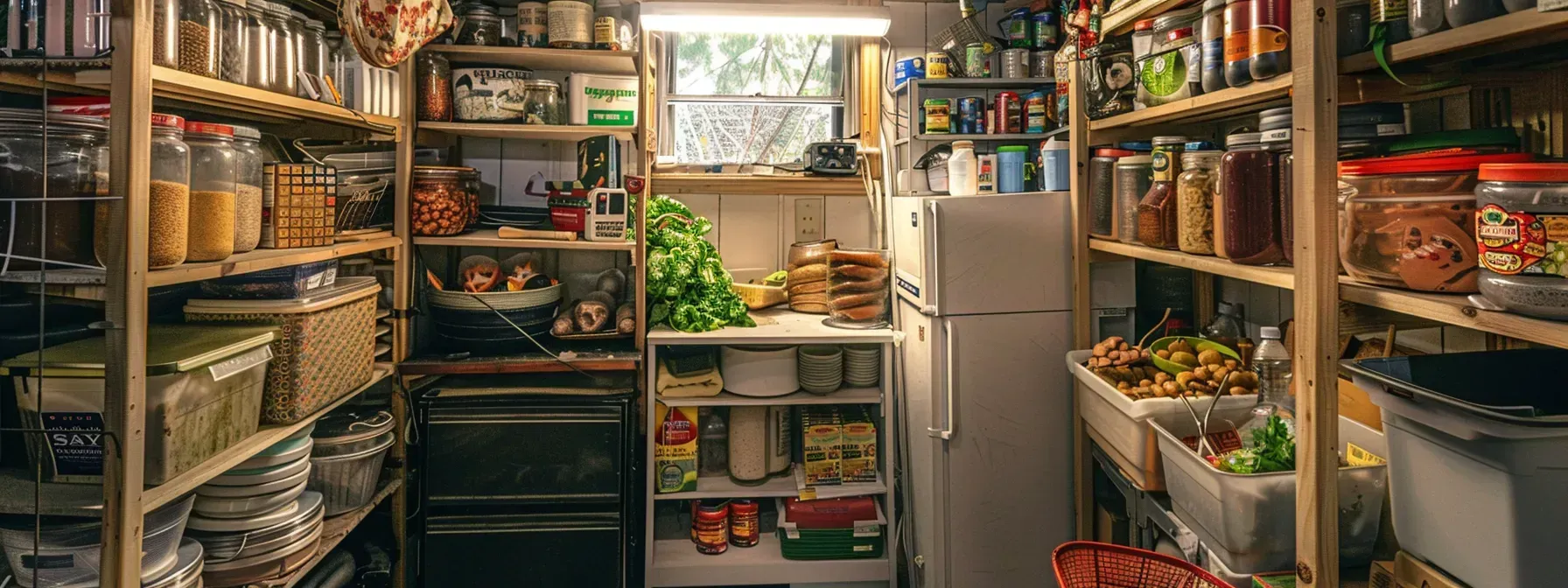
Effective pest prevention is a cornerstone of a healthy home. I'll show you how to seal entry points to block pests, store food securely to avoid attracting them, and dispose of waste correctly to keep them away. We'll also explore controlling moisture to prevent breeding grounds and employing natural repellents. Each strategy is key to maintaining a pest-free and healthy living space.
Seal Entry Points to Prevent Pest Access
In my years spent as a pest control expert, I've learned that one effective preventative action is to seal potential entry points. This means meticulously checking for and closing up gaps where pests like rodents, insects, and other critters can invade our homes. By using caulk to seal cracks around windows, doors and foundation, and incorporating door sweeps or weather stripping, we can greatly diminish the chances of pests finding their way indoors, ensuring the health and safety of our household.
Pests are adept at finding the smallest openings for entry, so it’s crucial to regularly inspect and maintain these barriers to access. For example, I advise homeowners to replace broken vent covers and secure loose siding or roofing. Regular maintenance like this is a practical yet critical step towards sustaining a pest-controlled environment and supporting a healthier living space:
| Preventative Action | Benefits | Maintenance Frequency |
|---|---|---|
| Sealing cracks and gaps | Reduces pest entry | Bi-annually |
| Installing door sweeps | Blocks gap under doors | Annually or as needed |
| Repairing vent covers | Prevents pest access through vents | Inspect seasonally |
Store Food Properly to Eliminate Pest Attraction
In my professional practice, I've found that proper food storage is a non-negotiable step in preventing pest attractions in the home. By keeping food in sealed containers and ensuring that nothing is left out in the open, you can significantly reduce the likelihood of pests making a beeline for your pantry. It's a straightforward yet effective deterrent, making it harder for pests to access a food source and pushing them to look elsewhere.
From personal experience, I recommend going beyond just putting away leftovers. It's vital to safeguard even seemingly insignificant crumbs or spills, as these can be a feast for tiny intruders. Vigilance in cleaning up immediately after meals and regularly checking for any signs of pests near food storage areas helps maintain a pest-free kitchen and directly contributes to the overall health of your home environment.
Dispose of Waste Effectively to Deter Pests
Discarding waste effectively is a vital component in deterring pests from encroaching on our living spaces. I've witnessed how proper waste management, including regular garbage disposal and secured trash bins, can form a robust barrier against pest invasions. This not only minimizes the attraction of pests but also reduces the likelihood of an infestation, a crucial step in upholding a healthy home environment.
Maintaining cleanliness in waste disposal areas is also key; it's something I've always emphasized to clients. Routine cleaning of trash receptacles and immediate handling of spills can prevent attracting pests like ants, rodents, and flies. By doing so, we ensure these areas don't become hotbeds for pest activity, safeguarding our homes from potential health hazards associated with pest presence:
| Waste Disposal Tips | Effectiveness Against Pests |
|---|---|
| Securing trash bins with lids | Reduces food source for pests |
| Regular garbage pick-up or disposal | Decreases pest attraction frequency |
| Cleaning spills and waste areas promptly | Averts pest infestations and health risks |
Control Moisture Levels to Reduce Breeding Grounds
In my professional experience, controlling moisture in your home is vital for curtailing pest breeding grounds. For instance, pests such as termites and cockroaches are drawn to damp conditions, which are ideal for their survival and reproduction. By addressing leaks promptly and ensuring good ventilation, especially in spaces like basements and attics, you can greatly reduce these moisture-rich habitats, ultimately minimizing the risk of infestations and contributing to a healthier home environment.
Furthermore, maintaining a dry home is not just about fixing leaks; it also involves proper landscape drainage to prevent water from pooling near your foundation. As I've advised clients in the past, slope the ground away from your home to facilitate runoff and use dehumidifiers in particularly damp areas. This proactive approach to moisture control is a critical step in effective pest prevention, ensuring your home stays less inviting to pests that seek out these moist regions for nesting and thriving.
Use Natural Repellents to Keep Pests at Bay
In my practice, I've advised many homeowners on the benefits of incorporating natural repellents into their pest control routines. Certain plants like lavender and peppermint naturally discourage pests due to their strong scents, offering an environmentally friendly deterrent. By strategically placing these around your home, especially near potential entry points, you can effectively repel common pests such as ants and mice, contributing to a healthier living environment.
Experience has shown me that natural repellents like diatomaceous earth are effective against a wide array of insects. Sprinkling this non-toxic substance in areas where pests are likely to pass-through desiccates the insects by absorbing their oils and fats. It's a simple, safe, and practical solution to keeping pests at bay without resorting to harsh chemicals, ensuring your home remains a secure and health-conscious space for your family.
Maintaining a Clean Home to Deter Pests Naturally
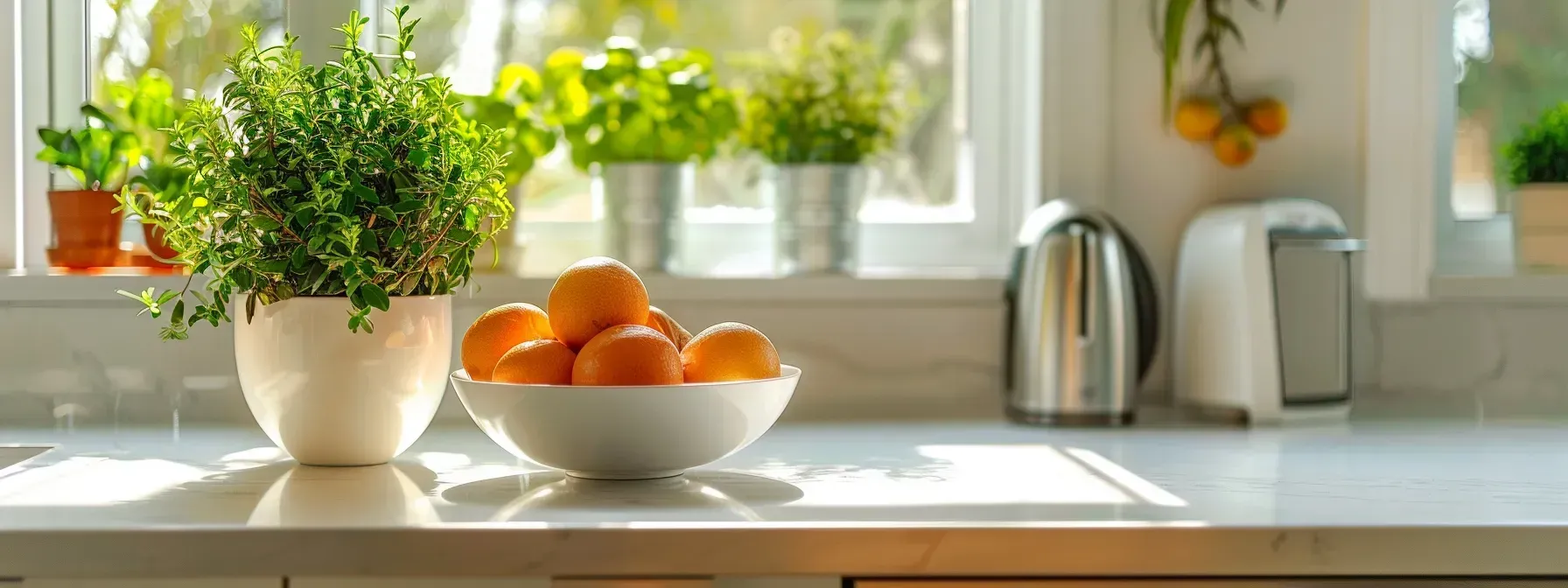
Maintaining a spotless home is a fundamental strategy in effective pest control. Regular cleaning eradicates potential habitats, while decluttering prevents pests from finding refuge. I advocate for vigilant vacuuming and dusting to eliminate residues that attract pests, and I underscore the necessity of laundering fabrics to disrupt any pests dwelling there. Additionally, managing outdoor spaces curtails opportunities for pests to enter, fortifying your home's defense against these unwelcome invaders. In the upcoming sections, I'll share detailed practices that can help sustain a pest-free and healthy living environment.
Clean Regularly to Remove Pest Habitats
Through my years of ensuring homes remain pest-free, I've recognized that regular cleaning is an indispensable part of pest control. Daily chores such as wiping down surfaces and vacuuming floors can dramatically reduce the likelihood of pests taking up residence. It's these regular touchpoints of cleanliness that disturb potential pest habitats and deter infestations, contributing to a healthy home environment.
In my line of work, I've observed that keeping areas free of food debris and spills is essential in removing attractions for pests. A clean kitchen, without leftover crumbs or garbage, serves as a poor refuge for rodents and insects seeking a meal. My advice is always centered on prevention; thus, encouraging homeowners to incorporate thorough cleaning routines that not only maintain a pristine space but also serve as a fundamental barrier against pest entry.
Declutter Living Spaces to Minimize Hiding Spots
In my professional practice, decluttering has proven to be a robust method for deterring pests in the home. I've observed that clutter provides countless hiding spots for insects and rodents, which can elude even the most vigilant homeowner. By minimizing clutter, such as stacks of newspapers, boxes, and unused items, we reduce these pests' opportunities to nest and multiply close to our living spaces.
Decluttering is more than just tidying; it's a strategic move in preventive pest control. I've guided clients through the process of simplifying their spaces, which not only makes their homes more visually appealing but also less hospitable to pests. A decluttered room leaves fewer places for pests to hide and thrive, making my job of protecting your home from infestations that much more effective.
Vacuum and Dust Frequently to Eliminate Pest Residue
In my extensive experience with pest control, I've learned that regular vacuuming and dusting are indispensable for eliminating residues that attract pests. By frequently removing dust and potential food particles from floors and surfaces, we prevent the accumulation of organic matter that can serve as a pest magnet, effectively reducing infestation risks and maintaining the sanctity of a healthy home.
Vacuuming is particularly effective against pests like fleas and bed bugs, which can embed themselves in carpets and upholstery. Consistent attention to these areas with a quality vacuum cleaner can disrupt the life cycle of these pests, offering a clean living space devoid of irritants and allergens. Dusting surfaces also prevent the subtle buildup of skin flakes and other minuscule food sources that could otherwise support a thriving pest population.
Wash Bedding and Fabrics to Remove Pests
In my professional experience, laundering bedding, curtains, and other fabrics is a vital step in pest control—especially when dealing with common home invaders like dust mites and bed bugs. These pests can harbor in textiles, and regular washing in hot water effectively removes them, thus contributing to a healthier home environment.
Maintaining a pest-free living space also means focusing on the less obvious sources of infestation. I've often guided clients to wash throw rugs and pet bedding frequently since these too can be hotspots for flea activity. This simple, yet often overlooked practice, helps eradicate pests that might otherwise go unnoticed, safeguarding your home's health.
Manage Outdoor Areas to Reduce Pest Entry
As a seasoned pest control professional, I can't stress enough the importance of managing outdoor spaces to prevent pests from entering your home. Regularly trimming back trees and shrubs that touch your house eliminates bridges for pests to cross over. Likewise, tidying up any stacked firewood or yard debris can deprive rodents and insects of their favored nesting sites, keeping them at bay and safeguarding your home's perimeter.
I've seen firsthand the dramatic difference that a well-maintained exterior can make in minimizing pest entry. Ensuring outdoor trash bins are secured and standing water is eliminated stops pests from being attracted to your property in the first place. Through these simple yet effective measures, you can dramatically reduce the likelihood of pests finding their way indoors, maintaining the health and comfort of your living environment.
Choosing Safe and Eco-Friendly Pest Control Solutions
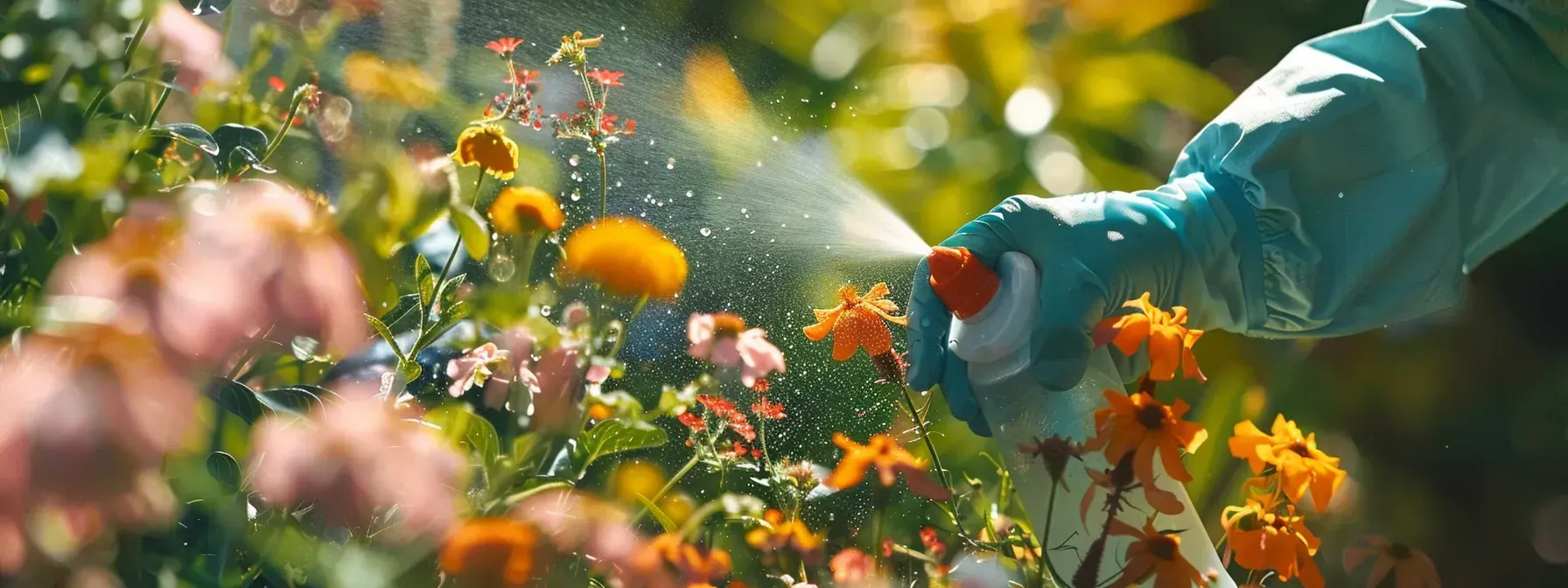
In managing our homes, I understand the need for pest control solutions that are both effective and gentle on the environment. We'll explore non-toxic pest control products, delve into the wonders of biological methods, and unwrap integrated pest management techniques. By learning about these eco-friendly solutions, we equip ourselves and our families with knowledge of safe practices that align with a sustainable lifestyle. These methods not only protect our homes but also contribute to the broader health of our planet.
Select Non-Toxic Pest Control Products
Choosing non-toxic pest control products is instrumental in safeguarding both our family's health and the environment. In my professional practice, I've prioritized using solutions like baits, traps, and natural pesticides that pose minimal risk to humans and pets. These eco-friendly approaches effectively manage pest populations without introducing hazardous chemicals into our homes, demonstrating a commitment to health and sustainability.
My experience has shown that products such as diatomaceous earth for insects and ultrasonic repellers for rodents offer practical, non-toxic alternatives to traditional pesticides. Here's a table of common non-toxic products and their uses to assist in choosing the right solution for your home:
| Non-Toxic Product | Target Pests | Application |
|---|---|---|
| Diatomaceous Earth | Insects (ants, fleas) | Spread in problem areas |
| Ultrasonic Repellers | Rodents | Plug into electrical outlets |
| Botanical Sprays | Various pests | Apply directly to pests or habitats |
Implement Biological Pest Control Methods
Implementing biological pest control methods is an essential step in maintaining a healthy home without resorting to chemical pesticides. These strategies rely on the introduction of natural predators, parasites, and pathogens to keep pest populations in check. For example, I've successfully used ladybugs to control aphid outbreaks in gardens, which, in turn, helps maintain the balance in the home's surrounding ecosystem.
Another effective biological control method I have firsthand experience with is the use of nematodes for controlling soil-dwelling pests like grubs and fleas. Nematodes are microscopic, beneficial worms that seek out and kill pests without any harm to humans or pets. They are easily applied to the soil, making them a practical solution for long-term pest management within a home's landscape:
| Biological Agent | Target Pest | Use Case |
|---|---|---|
| Ladybugs | Aphids | Garden pest control |
| Nematodes | Grubs, Fleas | Soil and lawn treatment |
Apply Integrated Pest Management Techniques
Applying Integrated Pest Management (IPM) techniques is a comprehensive approach that I've advocated for in maintaining a healthy home. This method strategically combines biological, cultural, physical, and chemical tools to minimize health, environmental, and economic risks. My personal involvement in implementing IPM strategies has consistently demonstrated its effectiveness in controlling pest populations while safeguarding my clients' living spaces.
IPM prioritizes the least hazardous control methods, focusing first on prevention: ensuring that a home doesn't offer pests the resources they need to survive. Through my professional experience, here are the steps I guide homeowners through to fortify their abode against intruders:
- Regular inspection for early detection of pest activity.
- Maintenance of a clean and clutter-free environment to remove potential habitats.
- Introduction of natural predators or barriers to deter pests.
- Responsible use of eco-friendly pesticides as a last resort.
These IPM practices help maintain a healthy home environment while promoting sustainability and safety, tailoring solutions to each unique situation for the most effective outcome.
Understand the Benefits of Eco-Friendly Solutions
Understanding the benefits of eco-friendly pest control solutions is integral when establishing a healthy home. These methods not only reduce the exposure of my family and pets to harmful chemicals but also minimize the ecological footprint of maintaining a pest-free environment. From personal experience, I've seen that natural alternatives bring peace of mind, knowing that safety and health are prioritized.
Eco-friendly solutions often mean a focus on not just eradication but also on prevention: identifying and eliminating the environmental factors that attract pests. Here are the steps I recommend for a sustainable approach:
- Choosing plant-based insecticides that are less toxic to non-target species.
- Adopting physical barriers such as screens and door sweeps to deter entry.
- Implementing gardening practices that attract beneficial insects to naturally control pest populations.
Embracing these strategies supports a strong, holistic defense against pests in an environmentally responsible way.
Educate Your Family on Safe Pest Control Practices
Educating my family on safe pest control practices is a fundamental aspect of nurturing a secure and healthy home. I prioritize sharing knowledge about the dangers of chemical pesticides and the benefits of non-toxic alternatives, such as using bait traps and natural sprays. It's crucial to foster an environment where every family member understands the importance of avoiding the indiscriminate use of harmful substances and the positive impact of eco-friendly pest control on our health and the environment.
In my quest to maintain a healthy dwelling, I actively involve my family in choosing and applying pest control methods. This includes showing them firsthand how to properly use and store eco-friendly products, ensuring they know which methods are safe to use around pets and children. By empowering them with this knowledge, they too can recognize and advocate for practices that protect not only our home but also the delicate balance of our surrounding ecosystem.
Engaging Professional Pest Control Services for Safety

Deciding on the right moment to bring in a pest control expert can transform a fraught situation into a controlled one—ensuring the health of our home. I'll help you evaluate the reliability of pest control companies, understand their treatment plans, and guide you in preparing your home for professional intervention. Post-treatment, it's critical to take steps to prevent recurrence. This section unpacks these considerations, focusing on why expert involvement is a key piece in the puzzle of maintaining a healthy, pest-free home.
Decide When to Contact a Pest Control Expert
Deciding to contact a pest control expert is a move I recommend when the severity and persistence of an infestation goes beyond the scope of routine prevention methods or DIY solutions. An expert's intervention becomes crucial when you spot signs of extensive damage, like structural weakening from termites, or face health risks from rodent droppings and insect bites. It's especially imperative to seek professional help if you have vulnerable individuals at home, such as children or those with compromised immune systems, as the health implications of pests can be profound.
In my professional experience, timely action is key. Should you notice recurring pest activity or an inability to control the situation effectively on your own, that's when it's wise to call a professional. Pest control experts not only address the current issue but also provide valuable insights into preventing future infestations, ensuring that the living spaces we cherish remain secure and healthy. Remember, a proactive stance can save you the stress and higher costs associated with larger, more entrenched infestations.
Evaluate Pest Control Companies for Reliability
When I look to hire a pest control service, reliability is paramount. It's crucial to research the company's track record, reading through customer reviews and verifying their licenses and certifications. Established reliability not only signals that the company is adept at effectively addressing pest issues but also suggests they are committed to safety and long-term prevention, which is indispensable for maintaining a healthy home.
I've learned through experience that engaging with a pest control company that offers a clear, detailed treatment plan indicates a higher level of reliability. A professional, trustworthy service will conduct a comprehensive inspection, propose tailored solutions, and offer follow-up visits to ensure the pests are completely eradicated. Aligning with such a diligent company fortifies my home against infestations, contributing to the overall health and safety of my living environment.
Understand the Treatment Plans Offered
Understanding the treatment plans offered by professional pest control services is central to eradicating unwelcome visitors from your home safely and effectively. As someone who takes the health of my home seriously, I appreciate a pest control company that develops a customized strategy, taking into account the specific type of infestation, the layout of the home, and the long-term prevention of pests. Such personalized options assure me that the issue will be tackled with precision and care.
Before finalizing a treatment plan, I always engage with the pest control experts to clarify their methods, the tools they will use, and any safety measures they implement to protect my home's occupants. Being informed about the process increases my confidence in their services and helps me prepare my home for their intervention. It's this collaborative approach that underscores the value of professional pest control in maintaining a healthy living environment.
Prepare Your Home for Professional Treatment
Preparing your home for professional pest control is a vital step to ensure the treatment's effectiveness and your family's safety. I always advise securing any pets and relocating them to a safe area, as treatments can involve chemicals or traps that may be hazardous to animals. It's equally important to cover or put away any open food items and utensils to prevent contamination. By taking these measures, we provide pest control professionals with an ideal workspace to carry out their tasks efficiently and safely.
Additionally, clearing the areas of your house where treatment will occur facilitates a thorough application of pest control solutions. I've found it helpful to move furniture away from walls and to clear countertops in the kitchen and bathroom: this accessibility allows for comprehensive coverage, minimizing the risk of pest resurgence. I also recommend informing the pest control experts of any specific areas of concern, ensuring targeted and effective treatment:
| Preparation Step | Reason | Benefit |
|---|---|---|
| Securing pets | Protect from chemicals/traps | Ensures pet safety during treatment |
| Covering food and utensils | Prevent contamination | Keeps consumables safe |
| Clearing treatment areas | Allow for thorough application | Facilitates effective pest control |
Follow Up After Treatment to Prevent Recurrence
Following the professional treatment of my home, I've learned the importance of staying vigilant to prevent pest recurrence. It's imperative that I remain observant for signs of pest activity, such as droppings or damaged materials. Prompt detection and communication with the pest control service can ensure that any emerging issues are swiftly addressed, maintaining the continued health of my home environment.
Moreover, adhering to the preventative recommendations provided by the pest control professionals is key to safeguarding my home against future infestations. These experts offer valuable advice tailored to my specific situation, such as sealing potential points of entry or adjusting environmental conditions that attract pests. By following these guidelines, I bolster the defenses of my home, promoting a lasting, pest-free space for my family's safety and comfort.
Frequently Asked Questions
What health risks do pest infestations pose in homes?
Pest infestations in homes can lead to health risks such as allergies, asthma, and the spread of infectious diseases.
Can you list common household pests and their associated dangers?
Common household pests, including rodents, cockroaches, and termites, pose health risks through disease transmission, allergen spread, and potential structural damage to homes.
What are the most effective strategies for preventing pest problems?
Preventing pest problems is best achieved through regular cleanliness, proper food storage, sealing entry points, and using natural deterrents for a pest-free environment.
How does maintaining cleanliness deter pests?
Maintaining cleanliness removes food sources and nesting sites, creating an unwelcoming environment for pests and deterring infestations effectively.
When should I consider professional pest control services?
Consider professional pest control services if you encounter persistent infestations, health risks due to bites or droppings, structural damage to your property, or if DIY methods fail to eliminate pests.
Get Quick, Efficient Pest Control & Exterminating
When pests invade your home, waiting isn't an option. At Resolve Pest Management, we understand how urgent these situations can be. That’s why we offer 24-hour emergency pest control services to residents in Lacey, NJ and Bayville, NJ. Whether it’s rodents, insects, or wildlife, our expert team is available day or night to protect your home and restore your peace of mind.
Our treatments are family and pet-friendly, ensuring that your loved ones—including the furry ones—are safe during and after service. We know your time is valuable, which is why we provide rapid scheduling, getting you the help you need, right when you need it.
If you're dealing with a pest emergency, don’t wait! Contact Resolve Pest Management today for immediate assistance. We're here to help make your home pest-free and comfortable again.
24-Hour Emergency Pest Control
We know pests can strike at any time- day or night. Resolve Pest Management is here to help 24 hours a day.

Family & Pet-Friendly Treatments
Protecting loved ones- furry or not is our #1 priority. We use pet-friendly treatments to give peace of mind.

Testimonials
"Resolve Pest Management is absolutely wonderful. Carlos and his team do thorough work and will put your mind at ease. They explain everything that needs to be done or what they suggest should be done. When we first called, Carlos showed up and checked every area of the house. Not only did he handle the mouse issue, he also found termite damage that was unknown to us. Since then, we have regular maintenance and have even called them other issues like bees. The receptionist is also very professional and kind, working with our availability. My family and I highly recommend Resolve Pest Management."
Tonianne D.
Barnegat Township NJ
Get on Schedule Today
